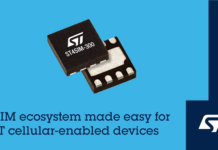
There are more than 12 billion devices already connected, and in the next few years, spending on IoT technology is projected to grow at a staggering 16 percent per year, eventually reaching $1.5 trillion by 2020.
In the same timeframe, the number of connected devices will reach 30 billion, according to IDC.
This growing generation of mobile-savvy consumers, purchasing what they want, when they want it, is creating an impending pressure on financial providers and retailers alike to evolve with connected lifestyles and provide improved payment solutions.
In addition, the rise of digital transactions, either online or in-store, will also increase the risk of data breach due to the surge of harvested credit card and other personal information. It is because of this that U.S. consumers are demanding more accountability from their financial institutions to reduce and prevent data theft.
To circumvent potential data threats while enhancing digital experiences for consumers, more payment card and financial providers are integrating advanced technology solutions into their services. We’re already seeing a transformation in payments from fingerprint authentication that enable secure and seamless transactions with just a tap of the finger, to mobile wallets that safeguard personal and financial data for quick purchases. However, innovative commerce solutions won’t stop there.
We’ll see more technology capabilities for both consumers and merchants, who will have to adapt to the following key trends in order to flourish:
More Near Field Communication: NFC adoption by consumers will continue to rise as more mobile devices become enabled and banks globally move to contactless enabled cards. As countries and banks are deploying this technology, they are also increasing the security of the transactions and enabling new payment use cases.

Better Authentication: The payment industry will start to see more types of authentication being used to ensure that the consumer is truly present. Already PCI has changed their evaluation from Two-Factor authentication to “Multi factor” authentication as some either risky transactions or high value transactions may require a third factor. Biometrics will gain wider adoption, not just through finger print scan, but facial recognition and heart beat signature. The heart beat signature is prime to be used in wearables as it provides another factor of authentication without being obtrusive to the consumer.
New ‘levels’ for m-commerce: More mobile services will launch digital wallets and the successful ones will do more than issue an occasional payment credential. They will go above and beyond to integrate features such as couponing, loyalty programs, rewards redemption and other value added services (ticketing, food ordering, etc). A multi-functional wallet will generate more use among consumers and create a virtuous cycle for growth.
Retailers will experience new business cases with the help of mobile innovation such as allowing customers to buy online and pickup in-store. Mobile devices are also being used tableside for faster payment as a way to move the lines quicker as the check-out process has been noted as the pain point of shopping.
More ‘connected devices’: Connected car technology can use GPS and other sensor technology to automate payments for tolls and other driving expenses. Instead of asking the consumer to pull out their phone, download an app, set up payment information and then conduct the transaction, a connected car can handle it all. This same model can be applied to meters that monitor electricity usage or a wide range of other IoT devices. It may be several years before consumers embrace the idea of their refrigerator ordering milk because it detected that they’re out, but the road is being paved.
Biometrics and AI: Adoption rates for fingerprint authentication will continue to increase. Emerging markets such as Indonesia and India, are using fingerprint ID as a way to authenticate customers as they open new bank accounts. The technology feature will also be used as a second or third form of authentication as it is quick and doesn’t come across as intrusive to the consumer. And payment networks today are already using analytics to reduce the risk of payment fraud. What we will see change is the use of Artificial Intelligence to enhance risk metrics and further reduce the fraud.
Complex security: Retailers struggle to keep their devices up to certification levels and current solutions take months to implement. They will begin to deploy a new era of security architectures that enable them to consistently manage security policies across various devices, which will in turn, help simplify operations. For SMB retailers, banks will play the managed service provider role when staffed IT support isn’t available. This will be a win-win, as it provides the acquiring banks room to grow their business services and differentiate from others.
We see the next year as a new world filled with a growing smart and connected retail industry filled with technology to help usher in a new era of holistic and streamlined experiences to unite businesses and customers. It may take a few more years for the process to be streamlined, but the road is being definitely being paved.
By: Michelle Tinsley
Source: https://www.paymentssource.com


















